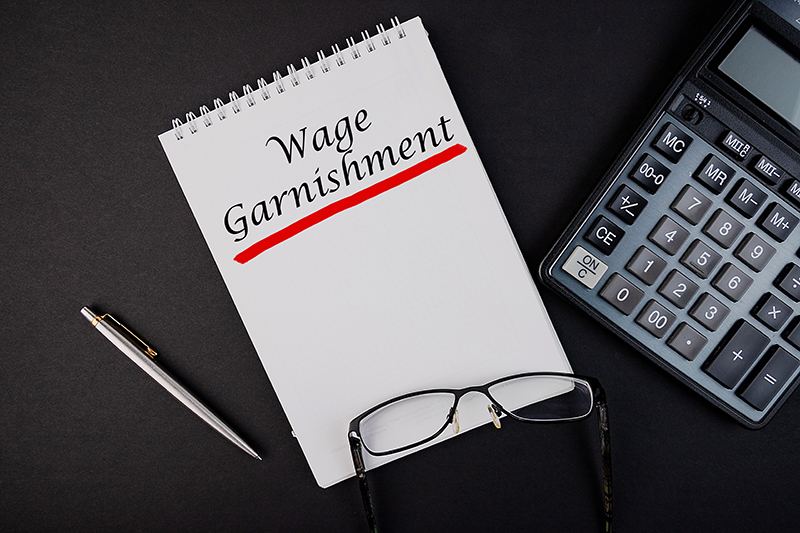How is wage garnishment for back taxes calculated?
July, 23 2020 by Jean Lee Scherkey, EA
It is hard to comprehend a wage garnishment in these troubling economic times. When landing in the difficult predicament of a wage garnishment, it may seem like tax relief is so far away that you will need a sultan of swing to send the tax blues away. After all, the only kind of dire straits anyone wants to experience is a concert from the gents across the pond with the same name. Thanks to the IRS People First Initiative, the IRS has pressed the pause button on issuing any new wage garnishment orders between the dates of April 1, 2020, and July 15, 2020. Whether the IRS will extend the postponement period remains to be seen, but one thing is for sure, the IRS has the memory of an elephant. Garnishments are not so far away and will begin again at some point. So, it is essential to understand how the amount sent to the IRS is calculated.
The purpose of the wage order is to determine how much of the taxpayer’s wages are exempt from levy. In other words, when a wage levy is ordered, the IRS takes the position that all the wages are subject to levy, except for the exempt amount. Once an employer receives IRS Form 668-W(ICS) or 668-W(C)DO Notice of Levy on Wages, Salary, and Other Income, they have one full pay period to comply with the garnishment order. The IRS does not include the total that must be sent to Uncle Sam in the wage garnishment order itself. The employer has the job of gathering the information needed from the affected employee to determine the correct garnishment amount from tables the IRS supplies. The employer must obtain the following information from the employee:
- Filing status as it appears (or would appear if there is a change of marital status or become Head of Household) on their individual income tax return.
- Number of dependents the employee may claim on their individual income tax return, as well as the relationship the employee has with the dependent (child, stepchild, parent, sibling, etc.).
- Number of additional standard deductions the employee and their spouse are entitled to because of being age 65 or older or blind. Each factor counts as one additional standard deduction.
Each dependent must have a valid Social Security number. The only time the employee does not need to produce a Social Security number is if the dependent is an infant under six months old. When counting the number of dependents, the employee should not include themselves. Keep in mind that if the employee is already under a court order to pay child support, then that amount will be added to the sum that is excluded from levy by the IRS. However, this exclusion comes at the price of losing the child as a dependent when calculating how much wages the taxpayer can exclude from the levy. This information must be given to the employer within three workdays. If the employee fails to timely present this information to their employer, their employer is required to calculate the exempt amount using the married filing separate filing status and zero dependents, which could result in a much smaller exemption total.
The employer takes the information above and applies it to the tables provided by the IRS in Publication 1494 Tables for Figuring Amount Exempt from Levy on Wages, Salary, and Other Income to determine the total wages that are exempt from levy. There are different tables for each filing status, and each table determines the total wages the employee can keep based on the number of dependents claimed and the frequency in which the employee is paid (daily, weekly, biweekly, semimonthly, or monthly). For example, based on the 2020 tables, an employee whose filing status is Single, under age 65 and not blind, has no dependents, and is paid biweekly will be able to exempt $476.92 from their wage per pay period. Using the same facts, except the employee filing status is Married Filing Joint, the biweekly exemption total would be $953.85.
Depending on their cost of living, the affected employee may need the angels of mercy to rescue their finances within a couple of pay periods. No matter if the employee is a family member, friend, or long-time cherished employee, if an employer fails to remit a garnishment order payment to the IRS, the employer may be required to personally pay the amount that should have gone to the IRS. Plus, the employer may also be assessed a penalty equal to fifty percent of the wages that should have been remitted to the IRS.
It is miserable to work hard only to end up making your money for nothing but taxes, penalties, and interest. In the walk of life, no one wants to face the IRS alone. The experienced professionals at Tax Debt Relief Assistance are here to walk hand in hand with you to help resolve your wage garnishment issue. They even offer a free consultation!





